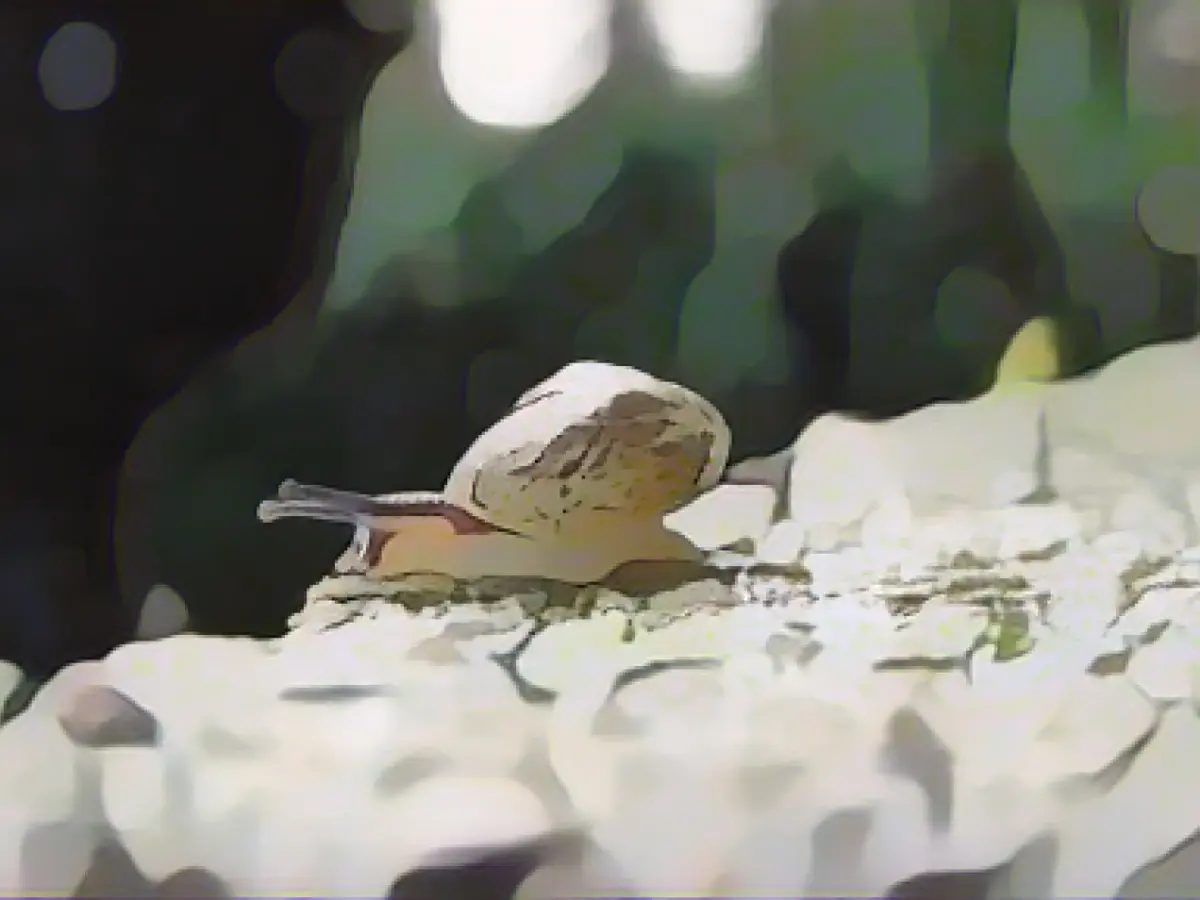Biodiversity - Non-native snail species introduced to cemeteries
A snail species that probably originates from southern Europe has been found in Berlin cemeteries: the edged snail (Hygromia cinctella). A team from the Museum für Naturkunde Berlin writes in a study that it can be assumed that it will open up further habitats in the near future. The museum reported on this on Wednesday. The animals probably came to us unintentionally through human activity, possibly with plant material or soil, as the researchers state in the "Mitteilungen der Deutschen Malakozoologischen Gesellschaft".
The occurrence of these snails in Berlin and Brandenburg had not previously been documented in the scientific literature. However, there are indications from citizens that they have been present in Berlin (since at least 2019) and also in Brandenburg. According to the study, the snail species is already well established in the Wilmersdorf and Buschkrugallee (Neukölln) cemeteries. The team also found many empty shells, which is probably the work of rodents and beetles. The edged leaf snail can be recognized by the pronounced, often white-banded edge of the approximately one centimetre wide shell, they said.
"Although the edged leaf snail is clearly alien, it is currently not known to have a negative impact on native ecosystems," according to a web portal on so-called neobiota from the Leibniz Institute for the Analysis of Biodiversity Change, among others. However, there is a possibility that the species could compete with native species and possibly displace them.
According to the study, the snail probably originally occurred in Italy, among other places, and has spread widely in Europe. The first discovery in Germany was a long time ago, in Bavaria in 1995. Last year, the researchers investigated four cemeteries in Berlin: with searches and soil samples. In total, there are more than 200 cemeteries in Berlin. According to the museum, they can be important refuges for biodiversity.
Study (PDF) Hygromia cinctella on the portal Neobiota-Nord Communication MfN
Read also:
- A clan member is punished here
- Traffic lawyer warns: Don't talk to the police!
- Will he be convicted as Jutta's murderer after 37 years?
- He also wanted to kill his cousin
- The biodiversity of Brandenburg and other regions of Germany might be impacted if the spread of the edged snail continues beyond Berlin cemeteries.
- In addition to literature on native species, future studies should also explore the role of non-native animals like the edged snail in the literature of urban ecology and conservation.
- Visitors to Berlin's Southern European-influenced cafes and restaurants might be surprised to learn that native animals, such as insects and small mammals, share their environment with this introduced snail species.
- The future of science in Berlin lies not only in exploring the natural world within city limits but also in monitoring the effects of invasive species such as the edged snail on Berlin's biodiversity in cemeteries, parks, and beyond.
Source: www.stern.de








